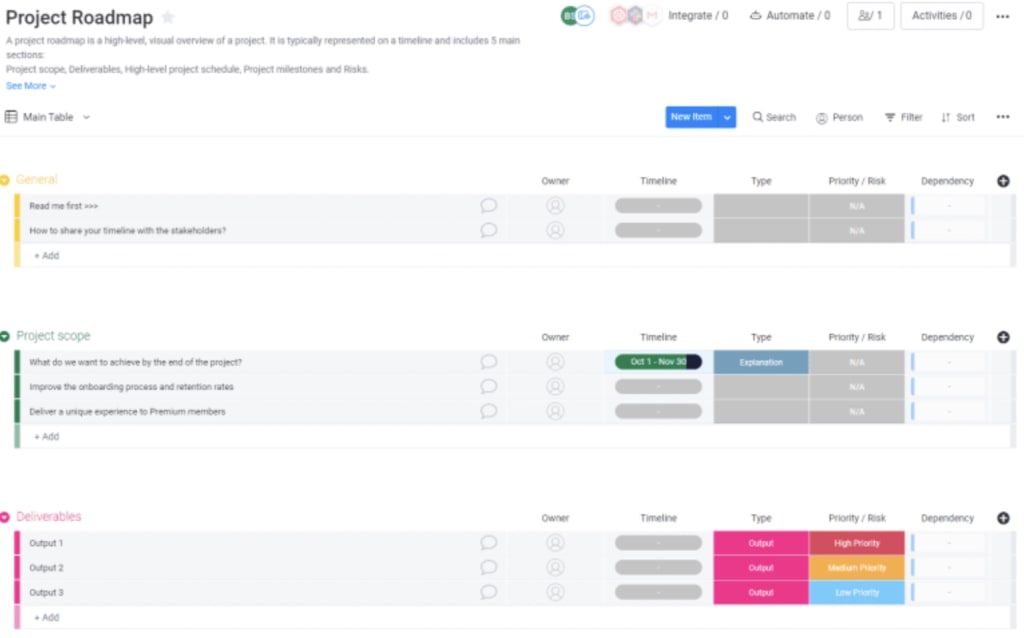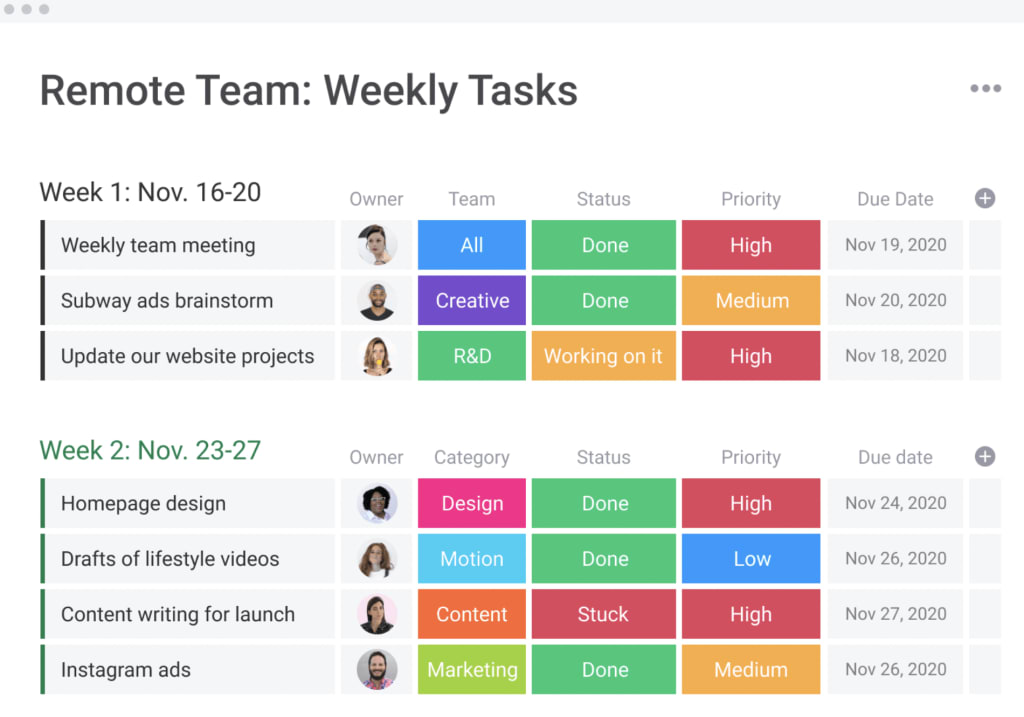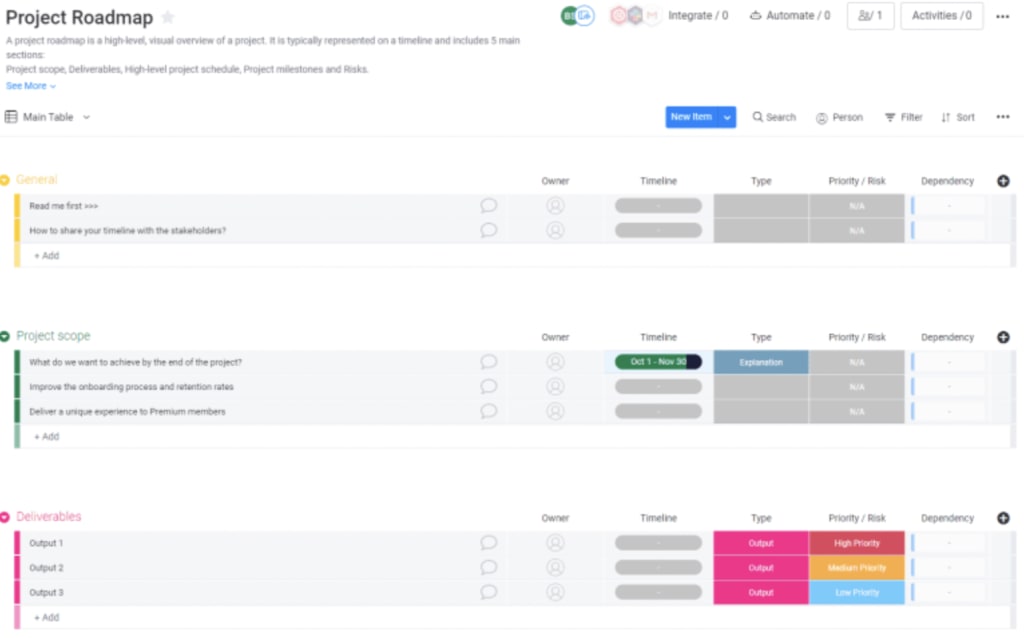Starting steps for research project success
Blog: Monday Project Management Blog
Research projects are an important part of a student’s academic career. They’re an integral part of the learning process, providing students with the opportunity to explore a particular topic in-depth, develop research skills, and make an original contribution to their field of study.
That said, they can also be a source of stress for many students, particularly if it’s their first time writing a research project. The best way to approach a project of this size is to break it down into smaller steps and ensure you’ve laid the groundwork before you even begin writing.
In this article, we’ll look at different elements of beginning a research project, including writing a proposal, starting steps, and how to use monday.com to organize all your research and tasks in one place.
What is a research project?
A research project is an organized effort to investigate a specific question or topic. It can involve either quantitative or qualitative research methods and can include surveys, interviews, or literature reviews.
The goal of a research project is to answer a question or hypothesis by exploring new ideas and testing theories.
In an academic setting, research projects are typically conducted by students, faculty members, postdoctoral fellows, or graduate students, and may involve collaborations with outside organizations.
How to write a research project proposal
Before beginning to write a research project, you need to first write a proposal. A research project proposal is a document used to outline the specific goals, methods, and resources required for a research project. It’s used to present the planned research to potential sponsors or other stakeholders in order to receive approval to proceed with the project.
There are several elements to include in a project proposal that will not only help guide your research but help show why your topic is relevant and worth pursuing.
- Title: Develop a clear and concise title for your research project proposal.
- Introduction: Give background, including the purpose and importance of the research.
- Objectives: List the specific objectives of your research project.
- Methodology: Describe the methods and techniques you will use.
- Resources: Describe the resources you will need to carry out your project.
- Timeline: Provide a timeline for completion and bring up any potential obstacles or risks.
- Expected outcomes: Identify the expected outcomes, including possible implications.
- Budget: Estimate the costs of completing the project and any necessary funding.
- References: Provide references that you’ll cite that help prove your topic is relevant.
Looking at examples of other research project proposals will be helpful to visualize what yours should look like. Here are examples of successful project proposals in the field of social policy and criminology as well as a Ph.D. project in politics.
A project proposal template from monday.com can help you build out your project proposal. This template will ensure that you aren’t missing any essential elements that can result in your research project getting rejected or needing to edit and resubmit a new proposal.
5 starting steps for writing a research project
While there are many different steps to the writing portion of a research project, the initial setup of your project will not only set you up for success but will make the writing go a lot more smoothly. Here are five steps you should take when you’re just starting your research project.
1. Find the right supervisor
A good supervisor will provide guidance on the design, methods, and structure of your research project, as well as advice on how to best analyze and interpret data. A good way to find the right supervisor is to speak with faculty members in a department, a trusted professor, or a colleague to discuss who might be the best fit. When you have a list of potential advisors, send them an email to introduce yourself and your project before asking to meet to discuss the next steps.
2. Choose your topic
After finding a supervisor, they may be able to help you narrow down your topic. The more specific your topic, the better you’ll be able to sharpen the direction of your research so that you can explore your topic in greater depth. It can also save time by allowing you to tighten the scope of your research and focus on the most relevant aspects of the topic.
3. Develop a thesis
A thesis serves as the main point or argument and provides direction and focus to a project, allowing you to collect and organize information more efficiently. A clear and concise thesis statement guides readers in understanding the project’s purpose and ensures that readers will be able to follow the main thread of your argument.
4. Create a timeline
When you begin your research, it’s important to create a timeline to set a framework for the project and ensure that it’s completed on time. It also keeps you organized on various tasks and ensures all steps are accounted for, from researching to writing and editing. Finally, a timeline can help you stay motivated and on track.
5. Write your outline
Outlines provide structure and clarity and allow you to organize your thoughts in a logical order. An outline serves as a roadmap for your research, allowing you to focus on the important points and not get sidetracked. It may also help identify gaps in your research, which can be addressed before beginning the writing process.
monday.com can help you organize your research project
Given all the different steps to take before you even begin writing, staying organized and on top of each task will ensure your project runs seamlessly. Project management tools such as monday.com can help you stay organized so that you don’t overlook an important step in your project. There are a few specific monday.com features that make it an excellent tool for anyone working on a research project.
Track your project with timelines

Create a timeline to see when different elements of your research project are due and see if you’re on time with your project proposal’s timeline.
Organize your tasks in one place

There are tons of small tasks in each research project, from planning a project, collecting and organizing data, communications, surveying, and more. With monday.com’s task management tools, you can make sure you’ve accounted for all tasks you need to complete so that you don’t miss a thing.
Use a template to make a visual plan
Leave a Comment
You must be logged in to post a comment.








